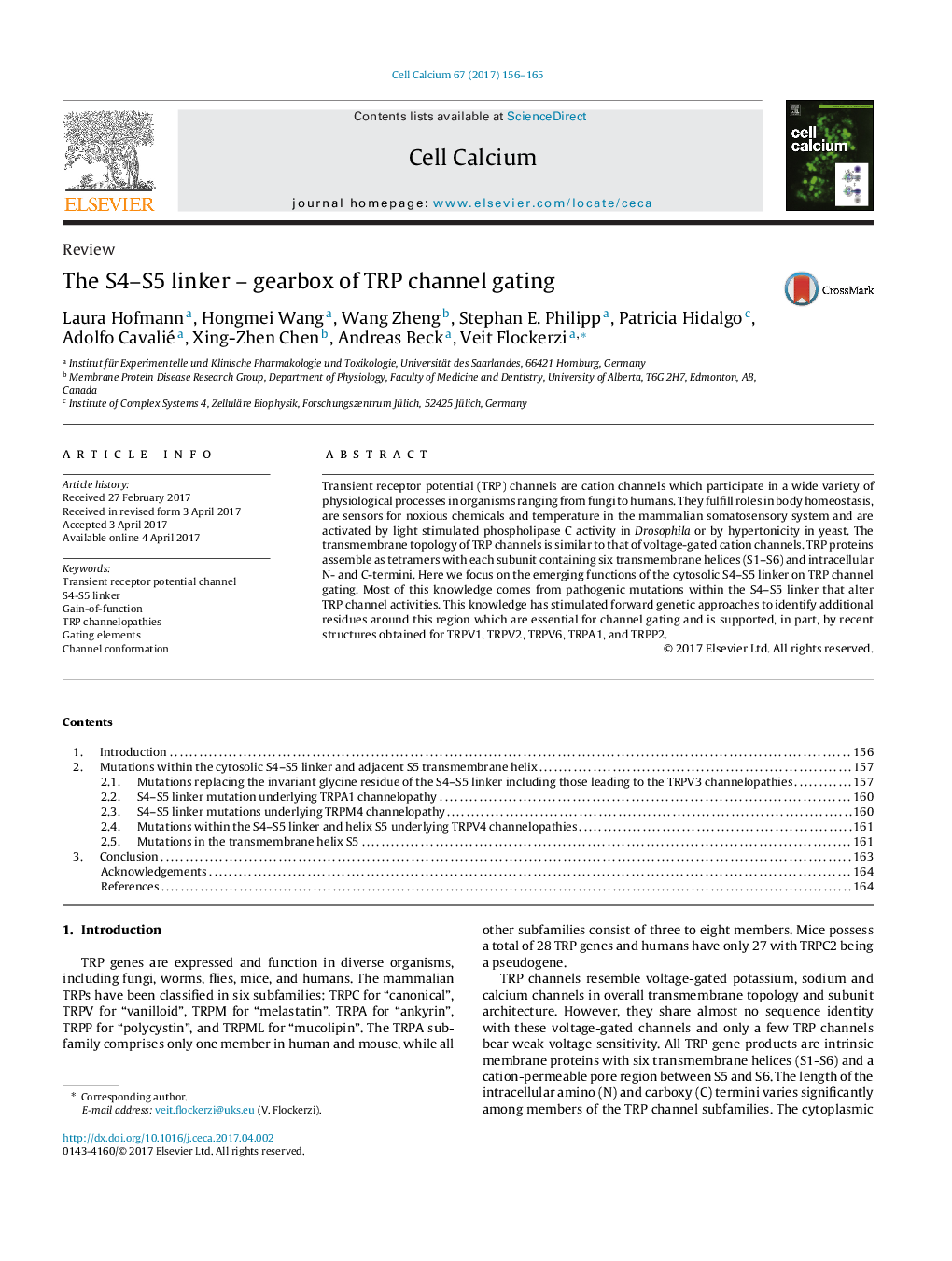| Article ID | Journal | Published Year | Pages | File Type |
|---|---|---|---|---|
| 5530501 | Cell Calcium | 2017 | 10 Pages |
â¢Pre-S1, S4-S5 linker, S6 and TRP-helix constitute unique signature of most TRPs.â¢S4-S5 linker connects the S1-S4 unit with the S5-pore-S6 unit.â¢S4-S5 linker is a hot spot for gain-of-function mutations in TRP channelopathies.â¢Interaction of wild-type S4-S5 with S6/TRP helix favors closed channel conformation.
Transient receptor potential (TRP) channels are cation channels which participate in a wide variety of physiological processes in organisms ranging from fungi to humans. They fulfill roles in body homeostasis, are sensors for noxious chemicals and temperature in the mammalian somatosensory system and are activated by light stimulated phospholipase C activity in Drosophila or by hypertonicity in yeast. The transmembrane topology of TRP channels is similar to that of voltage-gated cation channels. TRP proteins assemble as tetramers with each subunit containing six transmembrane helices (S1-S6) and intracellular N- and C-termini. Here we focus on the emerging functions of the cytosolic S4-S5 linker on TRP channel gating. Most of this knowledge comes from pathogenic mutations within the S4-S5 linker that alter TRP channel activities. This knowledge has stimulated forward genetic approaches to identify additional residues around this region which are essential for channel gating and is supported, in part, by recent structures obtained for TRPV1, TRPV2, TRPV6, TRPA1, and TRPP2.
Graphical abstractDownload high-res image (114KB)Download full-size image
